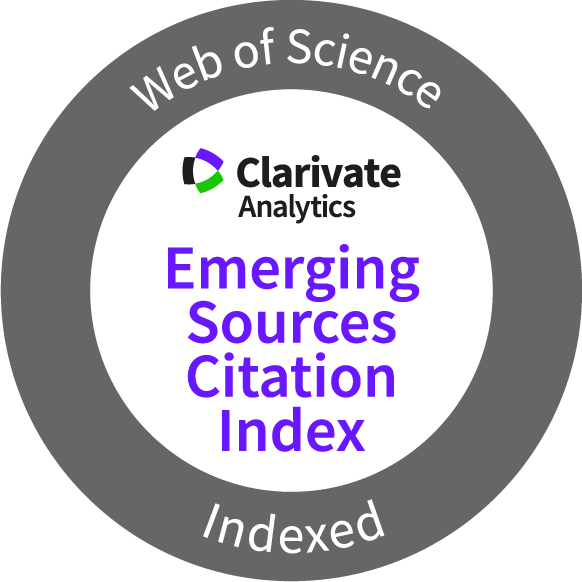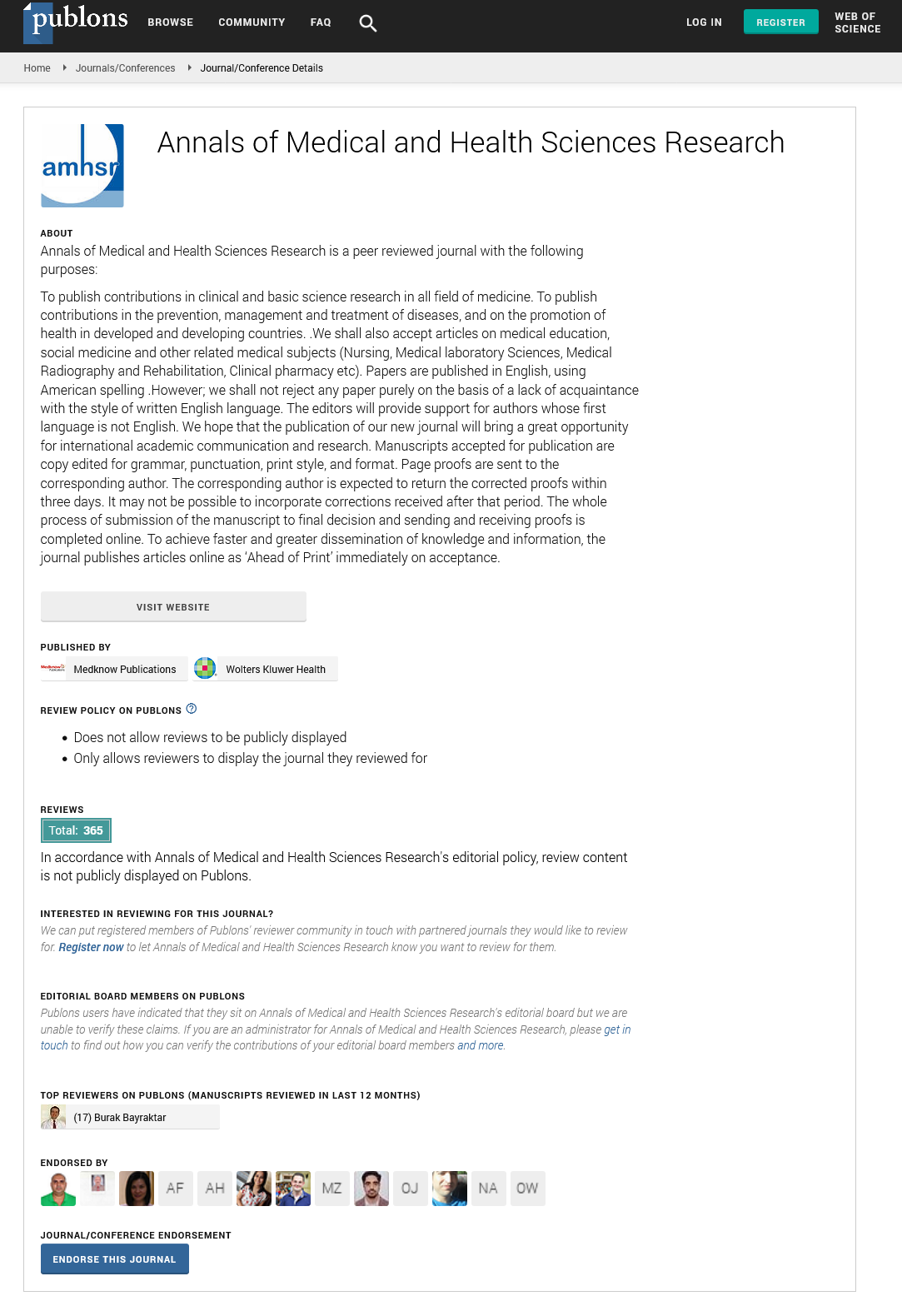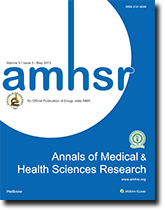Digital Pathology and Artificial Intelligence in Cancer Diagnosis
Received: 03-Nov-2024, Manuscript No. amhsr-24-151691; Editor assigned: 05-Nov-2024, Pre QC No. amhsr-24-151691 (PQ); Reviewed: 19-Nov-2024 QC No. amhsr-24-151691; Revised: 26-Nov-2024, Manuscript No. amhsr-24-151691 (R); Published: 03-Dec-2024
Citation: Junainah EM. Digital Pathology and Artificial Intelligence in Cancer Diagnosis. Ann Med Health Sci Res. 2024; S4:1057-1058
This open-access article is distributed under the terms of the Creative Commons Attribution Non-Commercial License (CC BY-NC) (http://creativecommons.org/licenses/by-nc/4.0/), which permits reuse, distribution and reproduction of the article, provided that the original work is properly cited and the reuse is restricted to noncommercial purposes. For commercial reuse, contact reprints@pulsus.com
Abstract
This study analyzes the integration of Digital Pathology (DP) and Artificial Intelligence (AI) in cancer diagnosis, focusing on their technological advancements, clinical applications, challenges and future directions. A comprehensive review of recent advances in digital pathology and AI was conducted, analyzing peer-reviewed studies and clinical trials. The study emphasized the capabilities of AI-driven algorithms such as Convolutional Neural Networks (CNNs) in improving diagnostic workflows and tumor classification. AI-enhanced DP systems demonstrated higher accuracy and efficiency in cancer detection and grading, particularly for breast, prostate and lung cancers. AI tools, including deep learning algorithms, have been successful in segmenting tumors and predicting patient outcomes. However, challenges remain, including data standardization, regulatory approval and model interpretability. The integration of DP and AI is transforming cancer diagnosis by enhancing the speed, accuracy and reproducibility of diagnostic workflows. Overcoming current challenges will lead to more widespread adoption, with potential applications in personalized medicine and global health.
Keywords
Digital pathology; Artificial Intelligence (AI); Cancer diagnosis; Deep learning; Whole slide imaging; Tumor segmentation; Convolutional Neural Networks (CNN); Histopathology; Precision medicine
Introduction
Digital Pathology (DP) and Artificial Intelligence (AI) represent a paradigm shift in pathology, with significant implications for cancer diagnosis. DP allows the digitization of pathology slides, while AI driven algorithms improve diagnostic speed and accuracy. By incorporating digital tools, pathologists can diagnose cancer more efficiently and accurately. Several studies have highlighted the promise of AI in assisting with diagnostic accuracy [1,2]. This research reviews the foundations, applications, challenges and future implications of DP and AI in cancer diagnosis.
History
The evolution of pathology from microscopy to digital platforms: Historically, pathology relied on glass slides and microscopes for disease diagnosis. The digitization of slides into high resolution images, known as Wholen Slide Imaging (WSI), has revolutionized this field [3]. WSI provides pathologists with a scalable and shareable platform for remote consultations and collaborative diagnostics [1].
Key advantages of digital pathology
Remote consultation and collaboration: Digital slides can be shared for second opinions.
Standardization: Facilitates consistent diagnosis across institutions.
Archiving and retrieval: Digital slides are easily stored and retrieved for future reference.
Artificial intelligence in transforming cancer diagnosis
AI’s role in cancer diagnosis has grown substantially, particularly with deep learning algorithms like CNNs. These algorithms excel at detecting subtle patterns in tissues that may be challenging for human pathologists [1,3]. For example, CNNs have been effective in detecting mitotic figures and tumor boundaries. AI applications in cancer diagnosis include:
Tumor detection and segmentation: AI accurately delineates tumor regions.
Histopathological grading: AI tools match or exceed human performance in tumor grading [2].
Prognostic prediction: AI models predict outcomes such as metastasis or recurrence based on tumor morphology [4].
Integrating AI into clinical workflow
AI integration into pathology practice requires adapting workflows to utilize its capabilities. AI tools act as decision support systems, assisting pathologists in making more accurate diagnoses [5]. However, the integration process also requires addressing ethical concerns and ensuring AI systems are continuously learning from new data [1].
Case studies and applications in cancer diagnosis
Several case studies showcase the potential of AI in improving cancer diagnosis.
Breast cancer: AI demonstrated superior accuracy in detecting lymph node metastasis in breast cancer [2].
Prostate cancer: AI automated Gleason grading and matched the performance of expert pathologists [1].
Lung cancer: AI differentiated histological subtypes, aiding in personalized treatment decisions [3].
Challenges and barriers to adoption
Several challenges must be addressed to facilitate the broader adoption of AI in cancer diagnosis.
Data standardization: Variability in data from different institutions complicates the training of AI models [3].
Regulatory approval: AI tools require thorough testing and approval before clinical use [4].
Explainability and trust: The opacity of AI models creates challenges for clinical trust and acceptance [5].
Future scope
Future advancements in DP and AI include
Integration with genomic data: AI could combine histopathological and molecular data for a more personalized cancer diagnosis.
Automated workflow systems: AI systems could manage routine tasks, allowing pathologists to focus on complex diagnostics.
Global health applications: AI could provide diagnostic support in low resource settings where expert pathologists are scarce.
Conclusion
DP and AI are transforming cancer diagnosis by providing faster, more accurate and personalized diagnoses. Overcoming current challenges, including data standardization and regulatory challenges, will be key to the broader adoption of these technologies in clinical practice. Continued advancements in AI algorithms and their integration with genomic and molecular data show potential for enhancing precision medicine. Strengthening data-sharing frameworks and promoting international collaborations can facilitate the global implementation of these innovations. Additionally, managing ethical concerns and ensuring the interpretability of AI models will build trust among clinicians and patients. As these technologies mature, they are set to transform oncology by improving diagnostic accuracy, streamlining workflows and expanding access to quality healthcare worldwide.
References
- Campanella G, Hanna MG, Geneslaw L, Miraflor A, Werneck Krauss Silva V, et al. Clinical-grade computational pathology using weakly supervised deep learning on whole slide images. Nat Med. 2019; 25(8):1301-1309.
- Bejnordi BE, Veta M, Van Diest PJ, Van Ginneken B, Karssemeijer N, et al. Diagnostic assessment of deep learning algorithms for detection of lymph node metastases in women with breast cancer. JAMA. 2017; 318(22):2199-2210.
- Litjens G, Kooi T, Bejnordi BE, Setio AA, Ciompi F, et al. A survey on deep learning in medical image analysis. Medical image analysis. 2017; 42:60-88.
- Pantanowitz L, Quiroga-Garza GM, Bien L, Heled R, Laifenfeld D, et al. An artificial intelligence algorithm for prostate cancer diagnosis in whole slide images of core needle biopsies: A blinded clinical validation and deployment study. Lancet Digit Health. 2020; 2(8):e407-416.
- Golden JA. Deep learning algorithms for detection of lymph node metastases from breast cancer: Helping artificial intelligence be seen. JAMA. 2017; 318(22):2184-2186.




 The Annals of Medical and Health Sciences Research is a monthly multidisciplinary medical journal.
The Annals of Medical and Health Sciences Research is a monthly multidisciplinary medical journal.